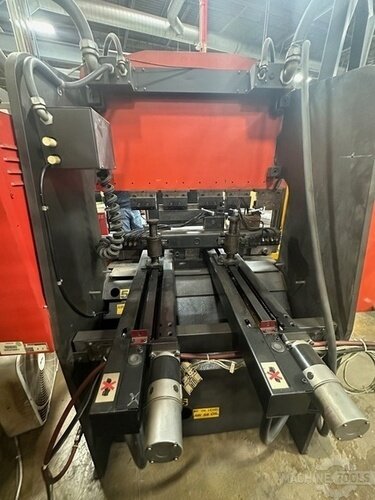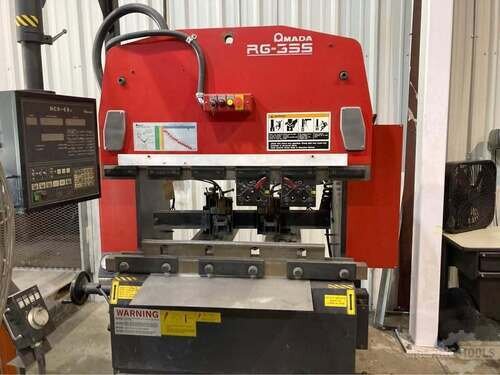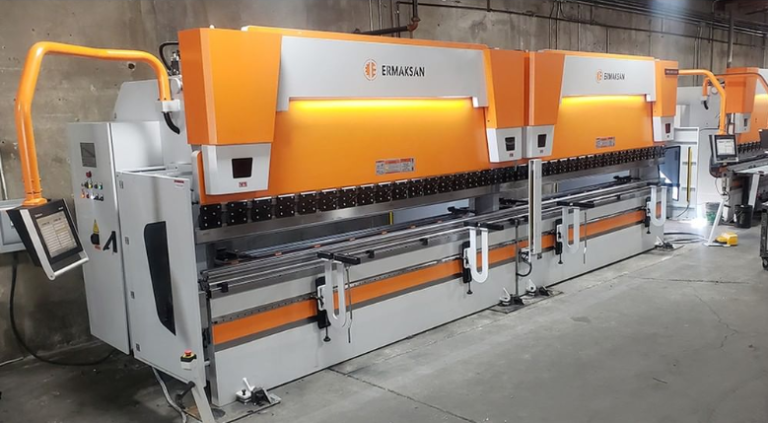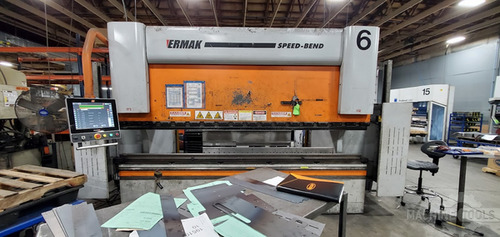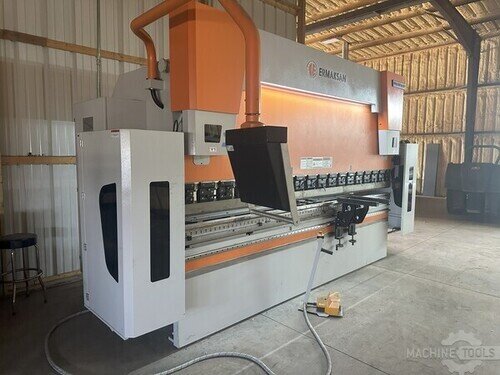Understanding the tonnage needs for used press brakes is a crucial aspect of ensuring optimal performance and efficiency in metal fabrication processes. This article delves into the essential aspects of calculating the tonnage requirements, helping manufacturers make informed decisions tailored to their specific needs. By exploring key factors and a step-by-step calculation process, the aim is to provide a comprehensive guide that aligns with Mac-Tech’s commitment to exceptional after-sale service and long-term customer support.
Understanding Press Brake Tonnage Requirements
Press brake tonnage is a critical factor that determines the capacity and capability of a press brake to bend metal sheets effectively. It refers to the amount of force required to form a specific thickness and type of material. Understanding this requirement is essential for manufacturers to ensure that their press brakes can handle the workload without causing damage to the equipment or compromising the quality of the bends. At Mac-Tech, the focus is on delivering solutions that align with the specific needs of our customers, ensuring that their equipment operates efficiently and reliably.
The tonnage requirement is influenced by several variables, including the thickness, type of material, and the length of the bend. By accurately calculating the tonnage needs, manufacturers can prevent overloading the press brake, which can lead to equipment failure and increased maintenance costs. With a 40-year track record, Mac-Tech emphasizes the importance of understanding these requirements to provide long-term support and ensure customers’ peace of mind.
1990 Accurpress 7606
- Capacity: 60 T x 72″
- Weight: 6,000 lbs.
- Dimensions: 84″L x 40″W x 70″ H
- Ram stroke: 8″
1992 Accurpress 750024
Key Factors Influencing Tonnage Calculations
Several key factors influence the calculation of tonnage needs for press brakes. The material type is a primary consideration, as different materials have varying tensile strengths, which affect the force needed to bend them. For instance, bending stainless steel requires significantly more force than bending aluminum of the same thickness. Additionally, the length of the bend and the die opening size are crucial parameters that impact the tonnage calculation. By considering these factors, manufacturers can accurately determine the appropriate tonnage for their specific applications.
Another critical aspect is the bend radius, which affects the amount of force required to achieve the desired bend angle. A smaller bend radius typically requires more tonnage, as it involves a sharper angle and more precision. Understanding these factors allows manufacturers to optimize their press brake operations, ensuring efficiency and preventing unnecessary strain on the equipment. Mac-Tech’s expertise in metal fabrication equipment enables us to guide our customers in making informed decisions that enhance their operational capabilities.
Step-by-Step Tonnage Calculation Process
Calculating the tonnage needs for a press brake involves a systematic approach to ensure accuracy and reliability. The first step is to gather all relevant data, including the material type, thickness, and length of the bend. This information is crucial for determining the baseline force required for the bending operation. Mac-Tech’s team of experts assists customers in compiling this data, leveraging our extensive knowledge in metal fabrication to ensure precise calculations.
Once the necessary data is collected, the next step involves using a tonnage chart or calculator to determine the required force. These tools take into account the material properties and bending parameters to provide an accurate tonnage estimation. By following this step-by-step process, manufacturers can ensure that their press brakes are adequately equipped to handle the demands of their operations. Mac-Tech’s commitment to customer support extends to providing guidance and resources for accurate tonnage calculations, ensuring that our clients achieve optimal performance and efficiency.
FAQ
What is press brake tonnage?
Press brake tonnage refers to the force required to bend a specific type and thickness of material using a press brake.
Why is it important to calculate the correct tonnage for a press brake?
Calculating the correct tonnage is crucial to prevent equipment damage, ensure quality bends, and optimize the efficiency of the press brake.
What factors influence the tonnage calculation for a press brake?
Key factors include material type, thickness, bend length, die opening size, and bend radius.
Can Mac-Tech assist with tonnage calculations for press brakes?
Yes, Mac-Tech provides expert guidance and resources to help customers accurately calculate the tonnage needs for their press brakes.
How does material type affect press brake tonnage requirements?
Different materials have varying tensile strengths, which influence the amount of force needed to bend them, affecting the tonnage requirements.
What tools can be used to calculate press brake tonnage?
Tonnage charts and calculators are commonly used tools to determine the required force based on material properties and bending parameters.
Does the length of the bend impact the tonnage calculation?
Yes, the length of the bend is a critical factor that affects the amount of force needed for the bending operation.
How can I ensure my press brake operates efficiently?
By accurately calculating the tonnage needs and considering all influencing factors, manufacturers can optimize their press brake operations for efficiency and reliability.
Get Weekly Mac-Tech News & Updates



